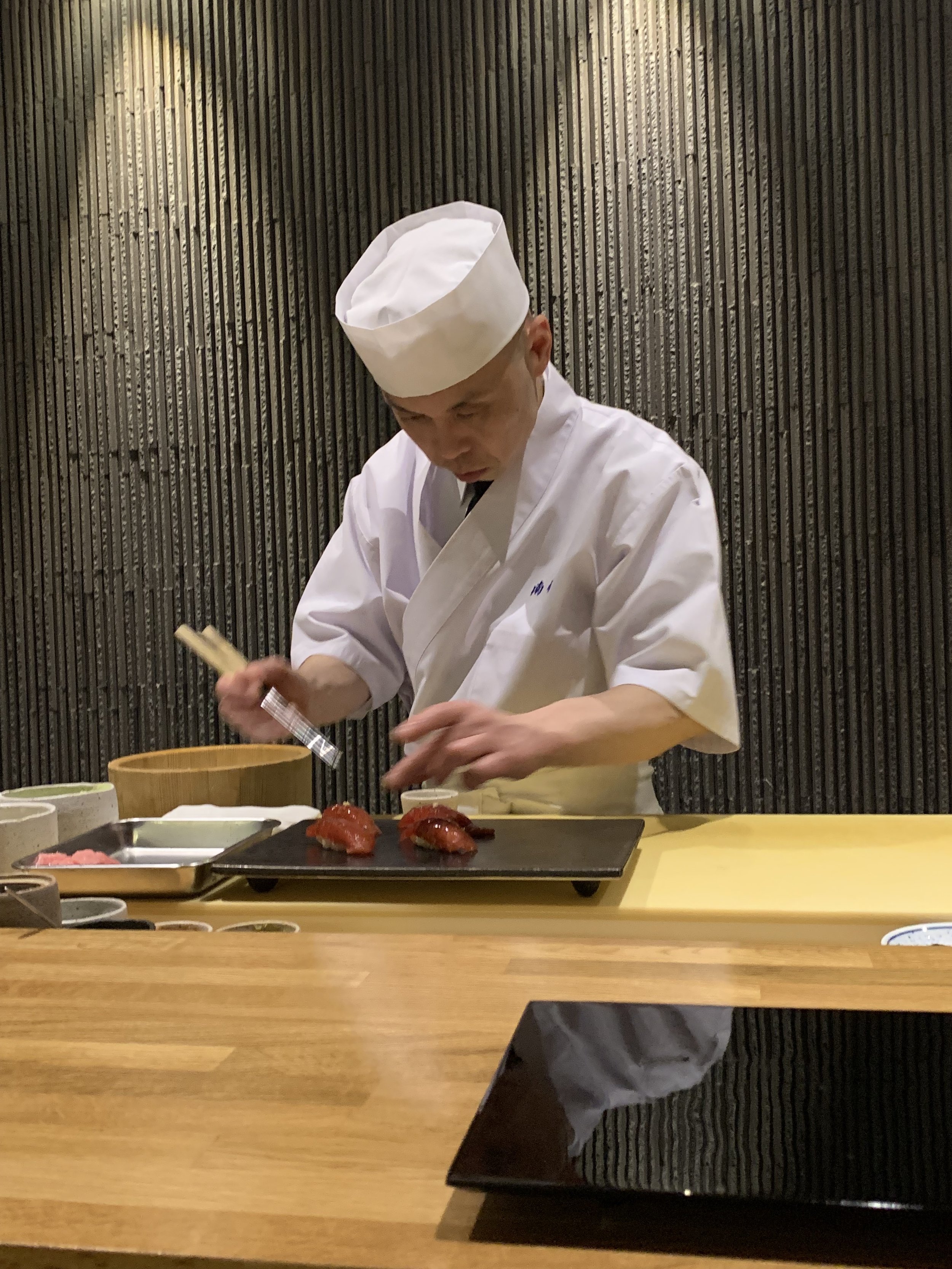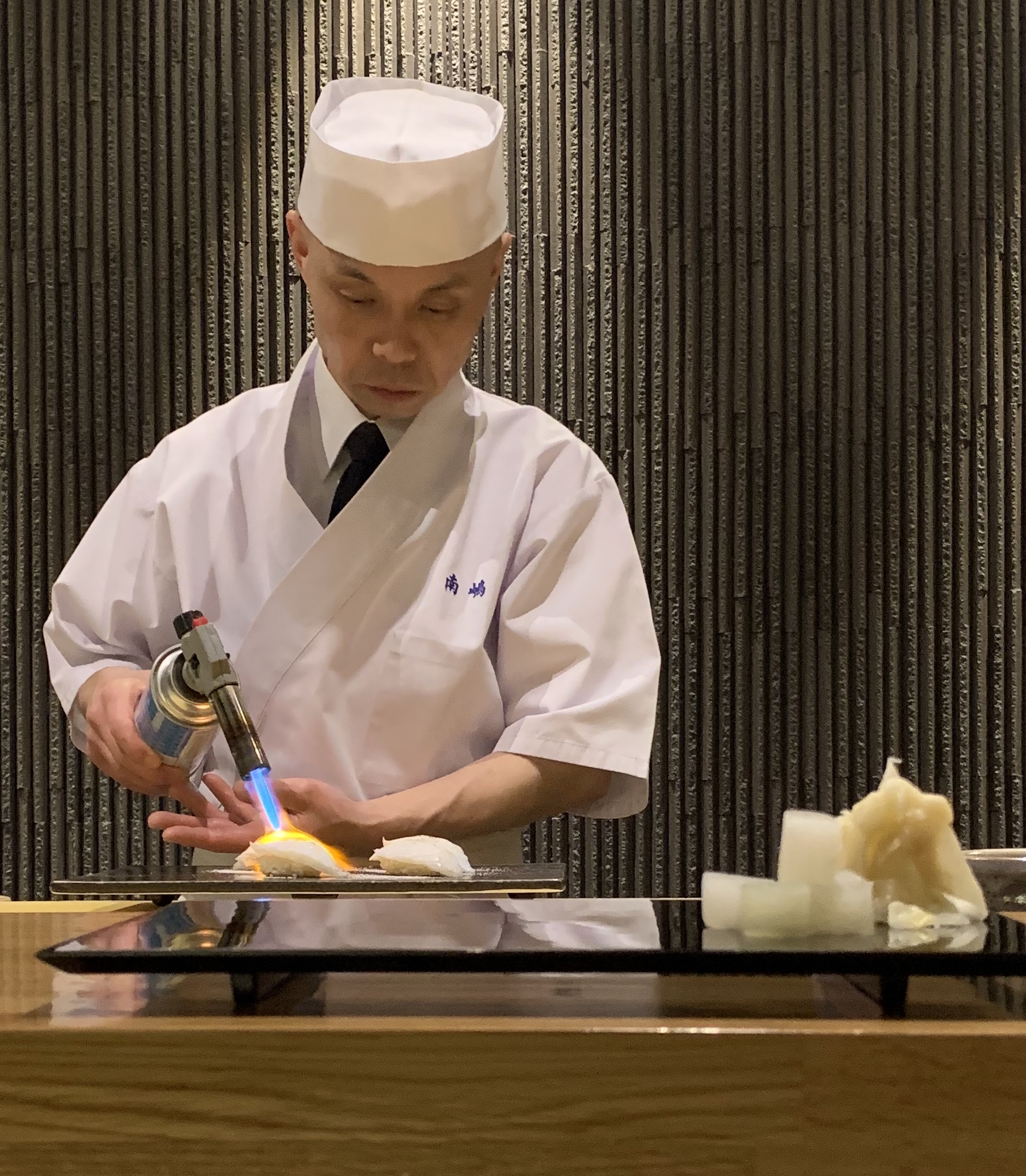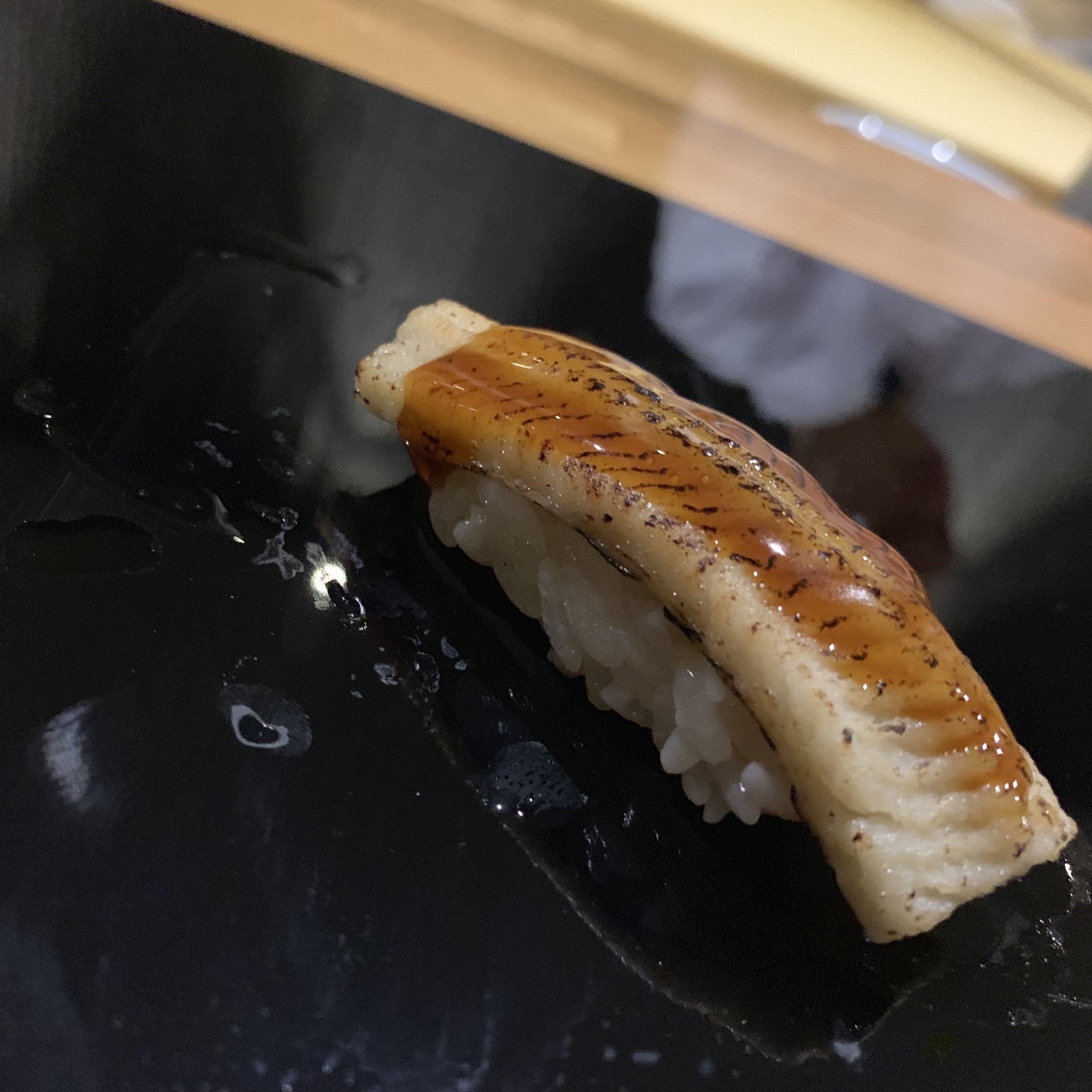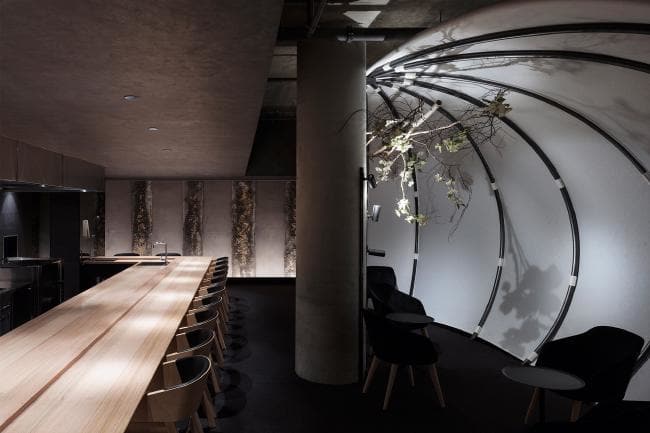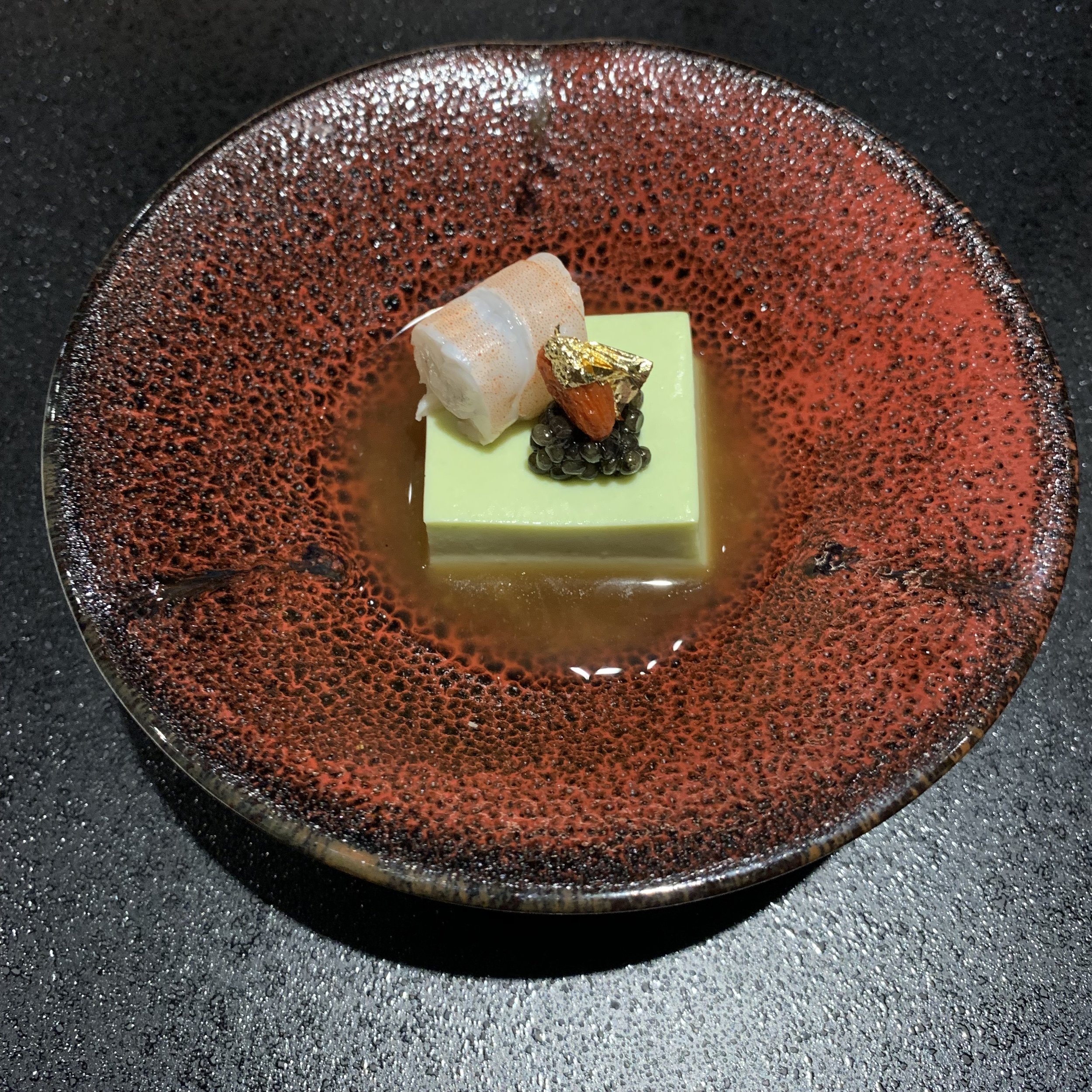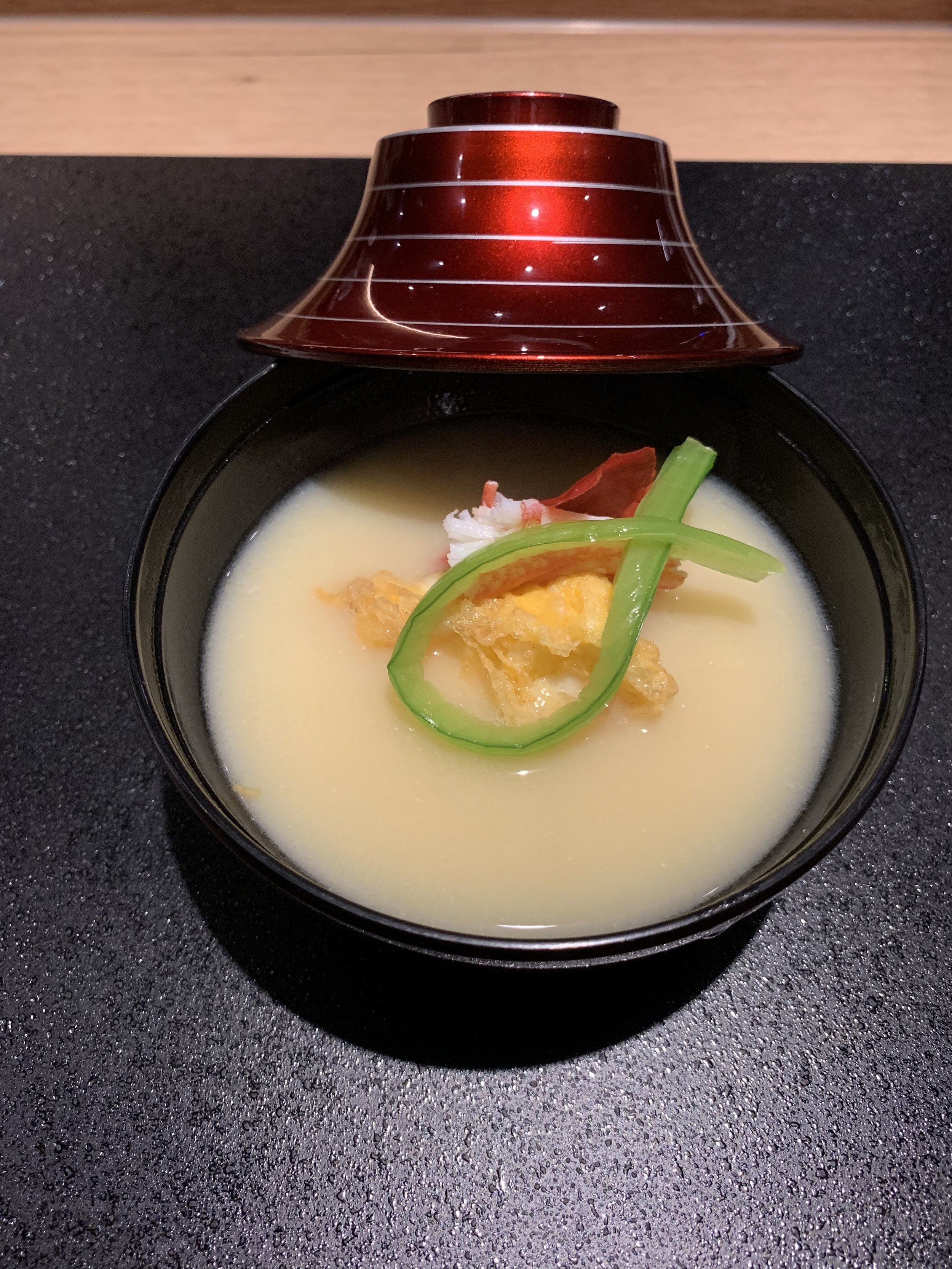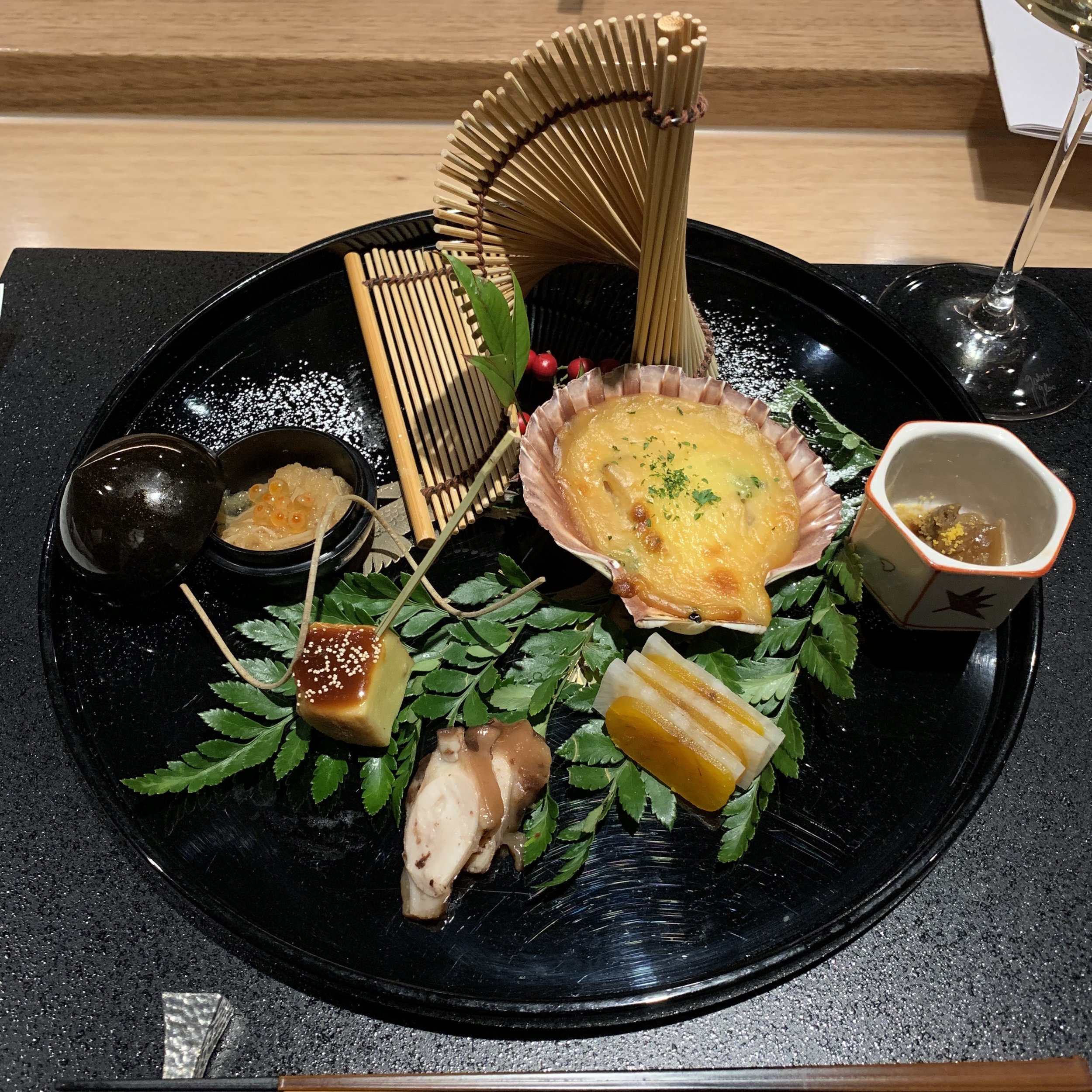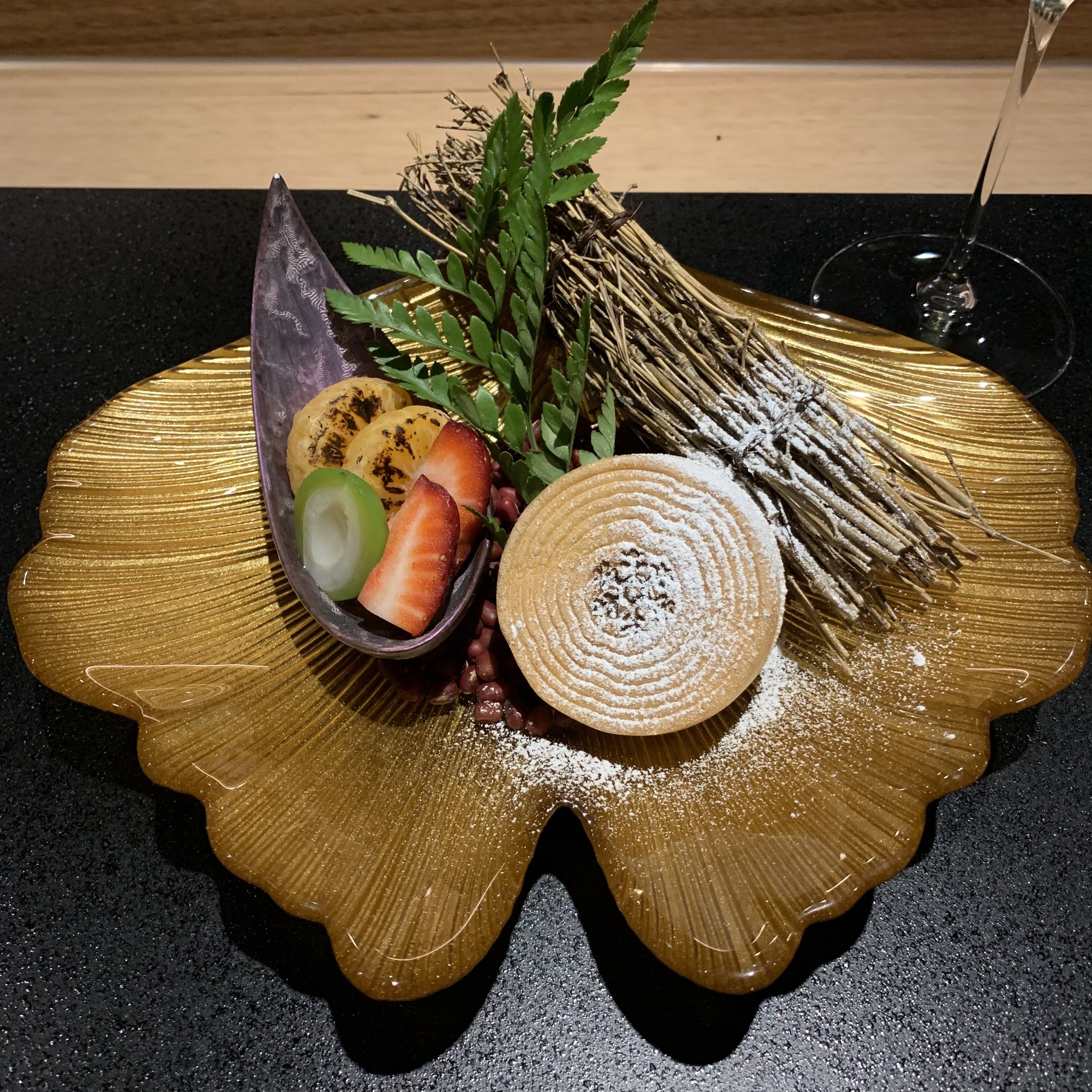Tasting The Seasons

I am a total devotee of traditional world cuisine. My frequent trips to Japan inevitably lead me to another astonishing meal, thus is the quality of restaurants there. Of course, the reality for me is that I visit as much as I would like to. This leads me to seek out the best quality I can find on my home turf.
Top quality Kaiseki and classical Edomae style Sushi establishments in Australia are very rare. For the uninitiated, Kaiseki ryori (会席料理) is a traditional multi-course Japanese dinner, based around the seasons, comprising of the finest ingredients available, expressing both time and place, a master study in technique that highlights the individuality of the chef’s style.
Kaiseki varies widely, but most commonly, standard courses are served with the chef choosing the order, which is usually follows:
-- Sakizuke, an appetizer served with sake
-- Nimono, a simmered dish
-- Mukozuke, a sashimi dish
-- Hassun, an expression of the season
-- Yakimono -- a grilled course
-- Hanmono or shokuji, a rice dish.
Kaiseki is haute cuisine, a Japanese degustation, if you will, and the epitome of “omotenashi” which translates as wholehearted hospitality.
Traditional Edomae Sushi is something very different. Translating as “in front of Edo”, it was first created in Tokyo during the Edo Period (1603 – 1868). An Edomae Sushi meal usually comprises around ten nigiri, the actual number making up the meal chosen by each individual restaurant. In those early days, the fish was marinated and preserved for a few days rather than served fresh. Today, Edomae sushi is more relaxed in its execution, encompassing the chef’s skill in maintaining freshness, his preparation technique, and ability to convey the sense of the seasons. Watching these creations come to life in his hands is mesmerising.
To me, these two ultra-traditional meal styles represent Japanese cuisine at its greatest. To find close exponents of these unique food experiences outside of Japan that truly do the cuisine justice is not easy. However, in Melbourne, we have two of the very best.
Considered amongst the city’s finest restaurants, I recently dined at both over two consecutive nights. Being completely different dining experiences, comparison cannot be made between the two. However, as my mission was to have as authentic a Japanese kaiseki and Edomae sushi meal as possible, I can compare them with similar experiences in Japan and also with my previous visits to the restaurants.
Minamishima
Deep in upscale suburban Richmond lies Japanese sushi temple, Minamishima. In a sleek, exquisite dining room chef Koychi Minamishima creates both traditional and innovative nigiri, using modern methods and ways to ply out the tastes and textures. His skills are masterful and a marvel to watch.
Chef Minamishima glazing prized tuna
This is not Edomae sushi, but many of those principles do exist here. This is more a sushi omakase (chef’s choice) and to me, this is as close as I’ve had to the premium quality I have found in Japan.
I first dined at Minamishima when it opened, without much fanfare, in 2014. I was utterly stunned at how good it was. It had all the hallmarks I look for in a personal, top-calibre sushi omakase. The meal comprised of the finest seasonal fish and crustacea available. With everything flown in from Tokyo’s Tsukiji fish market, I had finally found equal quality and skill here in Australia.
I visited again in 2016 and had another brilliant experience. This most recent time, however, I noticed some differences. The biggest of these, and one that took me by surprise, was that so many of the fish were from Australia and only a handful from Japan. Whereas the quality was excellent across the board, I did find some nigiri lacking in that X-factor texture and flavour. Also, there was not such an exotic array of fish on offer, as is expected at this level. Many fish were more mainstream, such as Sea Perch and King George Whiting.
The sushi rice appeared to be much more vinegared than I remember. In some instances, completely overpowering the fish, particularly the white fleshed varieties. Part of Minamishima’s style is to play with the textures and bring out nuances. One of these methods is by torching the fish with a butane burner. This is certainly effective, but during this visit I couldn’t help but be distracted by how many of the nigiri were finished by this method. I suddenly felt like some of the purity of the fish were affected by this. I felt pulled away from the zen-like experience by watching a burner in action so often throughout the meal.
Torching local Calamari
Around half way through the omakase, with one of the nigiri, I was knocked by quite a wasabi hit. I then noticed a huge bowl full of it alongside the chef. This was unusual, as particularly at sushi omakase meals the chef grates wasabi directly as needed for the nigiri’s creation. The taste of real wasabi is much subtler than the horseradish that passes as wasabi in many less high-end Japanese restaurants. Surely, this wasn’t what was being served here?
There were certainly some greatest hits, and the best of these for me were the ones that excelled through their pure simplicity, such as the Bluefin Toro from Japan, the gorgeous, warm Unagi (Sea Eel - always a highlight) and an intriguingly buttery Flounder fin.
Unagi and Flounder Fin Nigiri at Minamishima
After a recent renovation, with the addition of two private dining rooms, the size of the space has been expanded to now accommodate just over sixty diners. As the restaurant filled up on this visit, the experience became a little too busy. With a set $185 for the omakase of around thirteen nigiri, I expected more exotic fish on the menu. With this recent increase in price, accompanied by an optional additional $125 sake/wine pairing, I wasn’t sure the dinner was quite worth the outlay. A significant increase for the omakase is set for November this year – up to $225. It’s a hefty jump. I hope this means there will be more exotica from Japan?
The introduction of “specials” on the menu, at extra cost hovering between $26 and $32 per piece, I found interesting as well. There were three the night I was there, they included prized ingredients that in the past have formed part of the omakase. These included fugu (puffer fish) and a very modern wagyu beef with foie gras. I chose a sashimi of Diamond Clams. I’m not sure of the need for specials to bump up the cost. Why can’t these form part of the omakase?
Unfortunately for me, a little of the magic of Minamishima has been lost. It is still possibly the very best sushi restaurant in the country and one I would return to. But at the end of this meal, I craved a more intimate and traditional sushi experience – in Japan.
Ishizuka
Ishizuka Interior
The following night I wandered into the cavern like basement on Bourke Street for Melbourne’s most highly revered kaiseki. The space is set with a large floor to ceiling fabric lantern that divides the room and textural walls of concrete. This was my second time at Ishizuka, the first a little over a year ago being one of my most memorable dinners in Australia.
In a room larger than one is used to for kaiseki when in Japan, Ishizuka comfortably seats 16 lucky diners along a single counter where one watches an army of white jacketed chefs create meticulous dishes one by one.
Ishizuka Interior
Chef Tomataka Ishizuka was away the night of my visit, but it didn’t matter. This was a crack team in perfect motion. The complexity of the dishes here runs very deep. There is subtlety too, as you expect with true Japanese cuisine. Here too, is a mix of both Japanese and Australian ingredients.
An immersive and stunning experience from beginning to end, this was kaiseki as good as I have had throughout Japan. The parade of 11 transcendental courses are presented perfectly spaced apart, with a wine / sake matching I found to be so perfectly considered with some seriously great and very interesting drops.
From a delightful appetiser (sukizuke) of Avocado tofu, Crystal Bay Prawn, Caviar, Goji Berry and Wasabi Sauce, amongst the highlights were a magnificent Bonito broth with Saikyo miso from Kyoto blended through it, with fried crayfish and delicate snow crab.
Avocado Tofu, Crystal Bay Prawn, Caviar, Goji Berry, Wasabi Sauce
Fried Crayfish, Snow Crab, Daikon Bonito Broth with Saikyo Miso
Another, a dish so beautiful in its structure and presentation, simply called Winter Delicacies which comprised top quality morsels of the season.
Winter Delicacies at Ishizuka
The first of the two desserts (mizugashi) was pitch-perfect in its creativity
Monaka (a Japanese sweet) with Matcha Sponge, Mascarpone and Red Bean.
It’s a high-end dining experience for sure, at $235 for the kaiseki and $120 for the wine/sake pairing. But for theatre as pure as this, it’s worth every cent. I found the meal faultless.
Perhaps the biggest surprise for me of all which applied across both restaurants was the absence of Uni (sea urchin). Possibly the most prized ingredient for both styles of cuisine, it is almost obligatory for it to make an appearance. Where was it? Either shipped from Hokkaido as is the norm, or supplied from Tasmanian waters, I couldn’t understand it’s non-inclusion.
Ishikuza’s kaiseki changes each season, naturally, and I can’t wait to see what is on the cards for Spring.
Both Minamishima and Ishizuka remain quintessential dining experiences for aficionados of Japanese cuisine, reflecting the very best of the season. We are so lucky to have these restaurants in Australia. They both offer modern interpretations of their host cuisines, attuned to the Western palate (somewhat) whilst also grounded in tradition.
If you can, do the double whammy when you next find yourself in wonderful Melbourne. You will absolutely not regret it.
Ishizuka
Basement B01/139 Bourke Street, Melbourne VIC
+61 3 8594 0895
ishizuka.com.au
Minamishima
4 Lord Street, Richmond VIC
+61 3 9429 5180
minamishima.com.au

